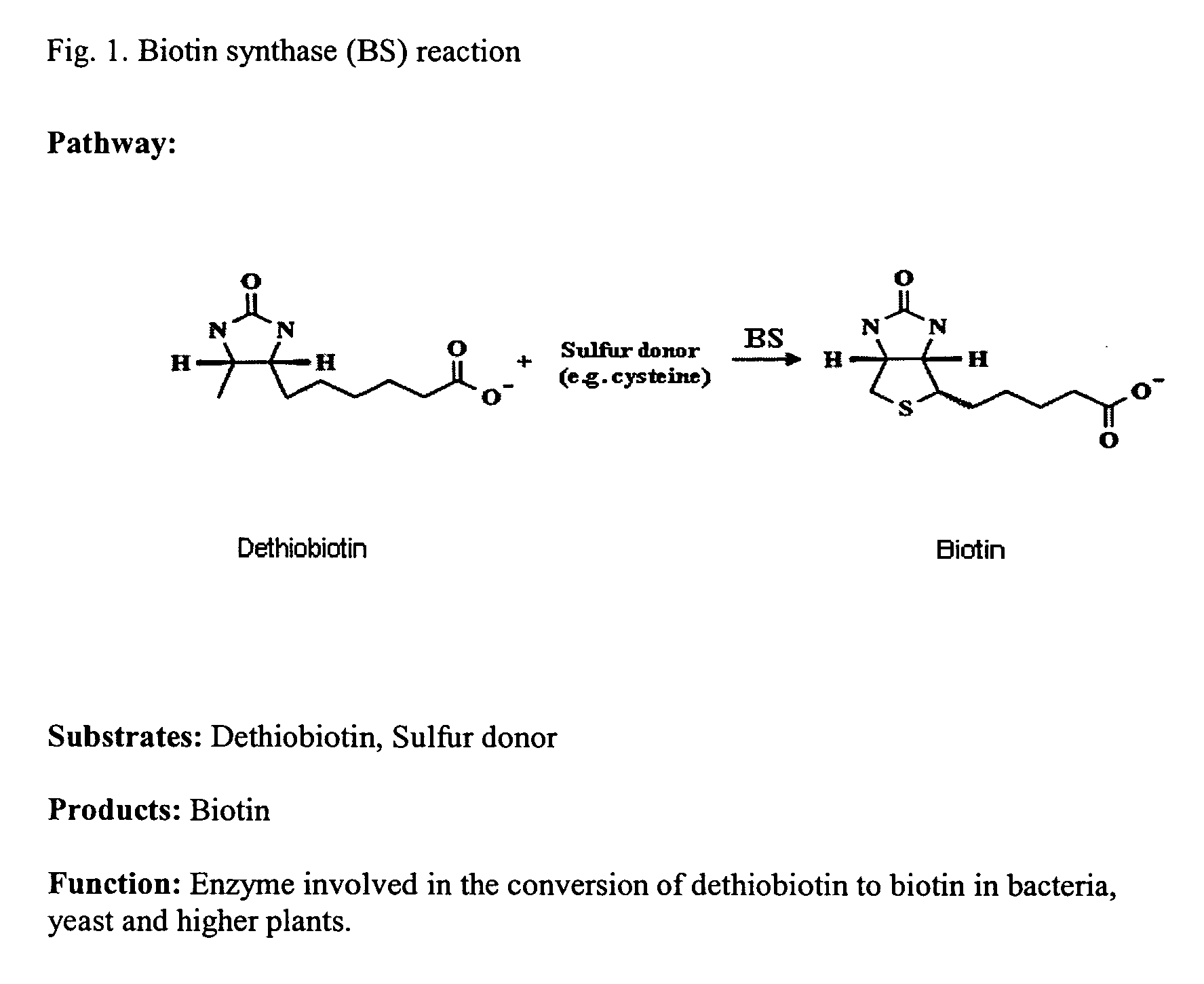Methods for the identification of inhibitors of biotin synthase expression or activity in plants
a technology of biotin synthase and inhibitors, applied in the field of plant molecular biology, can solve the problems that the literature does not describe the lethal effects of over-expression, anti-sense expression, or knock-out of the bs gene in plants, and achieve the effect of short and extremely stunted plant seedlings and decreased bs expression or activity
- Summary
- Abstract
- Description
- Claims
- Application Information
AI Technical Summary
Benefits of technology
Problems solved by technology
Method used
Image
Examples
example 1
Construction of a Transgenic Plant Expressing the Driver
[0075] The “Driver” is an artificial transcription factor comprising a chimera of the DNA-binding domain of the yeast GAL4 protein (amino acid residues 147) fused to two tandem activation domains of herpes simplex virus protein VP16 (amino acid residues 413-490). Schwechheimer et al., 36 PLANT MOL. BIOL. 195-204 (1998). This chimeric driver is a transcriptional activator specific for promoters having GAL4 binding sites. Expression of the driver is controlled by two tandem copies of the constitutive CaMV 35S promoter.
[0076] The driver expression cassette is introduced into Arabidopsis thaliana by agroinfection. Transgenic plants that stably expressed the driver transcription factor are obtained.
example 2
Construction of Antisense Expression Cassettes in a Binary Vector
[0077] A fragment, fragment or variant of an Arabidopsis thaliana cDNA corresponding to SEQ ID NO:1 is ligated into the PacI / AscI sites of an E.coli / Agrobacterium binary vector in the antisense orientation. This places transcription of the antisense RNA under the control of an artificial promoter that is active only in the presence of the driver transcription factor described above. The artificial promoter contains four contiguous binding sites for the GAL4 transcriptional activator upstream of a minimal promoter comprising a TATA box.
[0078] The ligated DNA is transformed into E. coli. Kanamycin resistant clones are selected and purified. DNA is isolated from each clone and characterized by PCR and sequence analysis. The DNA is inserted in a vector that expresses the A. thaliana antisense RNA, which is complementary to a portion of the DNA of SEQ ID NO:1. This antisense RNA is complementary to the cDNA sequence found...
example 3
Transformation of Agrobacterium with the Antisense Expression Cassette
[0080] The vector is transformed into Agrobacteriun tumefaciens by electroporation. Transformed Agrobacterium colonies are isolated using chemical selection. DNA is prepared from purified resistant colonies and the inserts are amplified by PCR and sequenced to confirm sequence and orientation.
PUM
 Login to View More
Login to View More Abstract
Description
Claims
Application Information
 Login to View More
Login to View More - R&D
- Intellectual Property
- Life Sciences
- Materials
- Tech Scout
- Unparalleled Data Quality
- Higher Quality Content
- 60% Fewer Hallucinations
Browse by: Latest US Patents, China's latest patents, Technical Efficacy Thesaurus, Application Domain, Technology Topic, Popular Technical Reports.
© 2025 PatSnap. All rights reserved.Legal|Privacy policy|Modern Slavery Act Transparency Statement|Sitemap|About US| Contact US: help@patsnap.com

